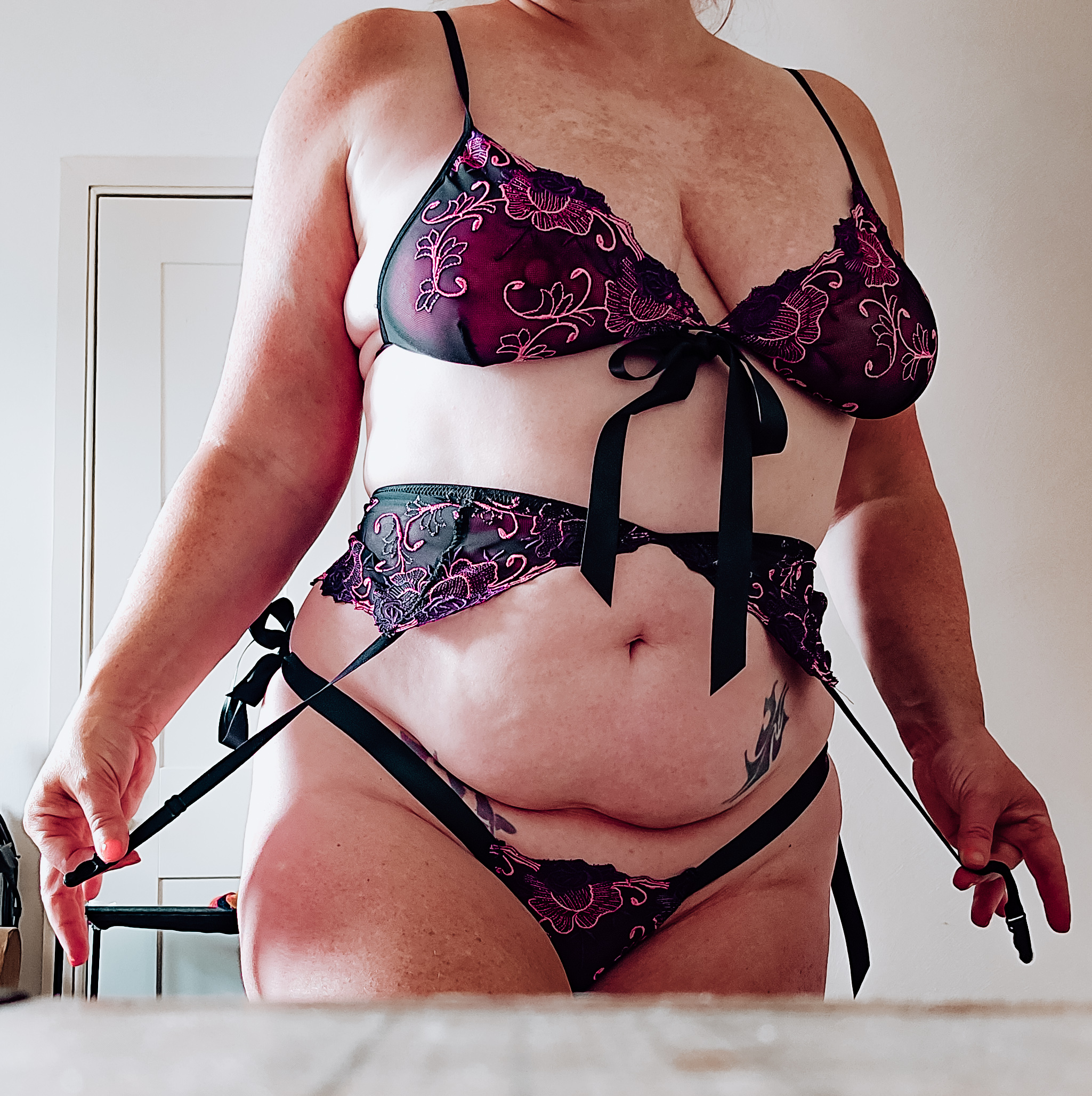Understanding the Rebound Effect
The rebound effect can be a challenging and emotional experience, especially when it comes to romantic relationships. When we break up with someone, we often believe that our next relationship will be the one that heals our heart and brings us closure. However, the rebound effect is a common phenomenon where we enter into a new relationship too quickly, often due to a strong physical or emotional attraction, without fully processing our emotions from the previous breakup.
A Brief Overview of Rebound Relationships
The concept of rebound relationships refers to the phenomenon where an individual enters into a new romantic relationship shortly after the end of a previous, often tumultuous or painful, partnership. This rebound effect can be attributed to various factors, including emotional reliance on past partners, unresolved issues from previous relationships, and a desire for validation or comfort.
Rebound relationships can take many forms, but they often share common characteristics. They may involve intense physical attraction, shared emotional experiences, or a sense of familiarity. However, these relationships can also be emotionally shallow, lacking depth and intimacy compared to the previous relationship. Furthermore, rebound relationships can lead to feelings of guilt, regret, and unresolved emotions when they inevitably end.
Managing expectations is crucial in avoiding the pitfalls of rebound relationships. This involves being aware of one’s motivations for entering into a new relationship, recognizing signs of emotional unavailability or instability, and setting clear boundaries. By acknowledging the potential risks associated with rebound relationships, individuals can take steps to ensure that they are prepared for the possibility of another failed partnership.
Understand that rebound relationships often stem from unresolved issues in previous relationships rather than a genuine desire for a healthy partnership. Recognizing this understanding allows individuals to seek out new connections with a clearer sense of self and fewer emotional dependencies. It also encourages them to engage in meaningful, introspective work – such as self-reflection and personal growth – before entering into a new relationship.
The Emotional Need for Comfort and Security
The concept of rebound relationships is often viewed as a way for individuals to quickly move on from a past relationship, but it can also be seen as a means to avoid dealing with emotional issues that led to the breakdown of the previous relationship.
A rebound relationship is a new romantic connection formed shortly after the end of an existing one. This type of relationship often stems from emotional needs such as comfort and security that are not being met in the initial breakup. When someone enters a rebound relationship, they may be seeking validation, reassurance, or distraction from their emotions.
The emotional need for comfort and security can manifest itself in different ways during a rebound relationship. Individuals may prioritize physical intimacy, convenience, or familiarity over deeper connection and communication with their new partner. This can lead to an uneven power dynamic in the relationship, where one person is seeking stability while the other seeks excitement or validation.
Managing expectations in a rebound relationship requires understanding that it’s unlikely to be a healthy or fulfilling partnership. The emotional needs of both parties may not be being met, and the relationship may be used as a means to avoid dealing with underlying issues. Recognizing these dynamics is crucial in handling rebound relationships effectively and preventing further hurt or emotional turmoil.
A more effective approach would be to take time to process emotions, reflect on personal growth, and identify underlying needs that were not being met in the previous relationship. This can involve seeking therapy, engaging in self-care activities, and cultivating a support network of friends and family. By addressing emotional needs in a healthy manner, individuals can build stronger connections with future partners and cultivate more fulfilling relationships.

Recognizing the Signs
Rebound relationships, also known as rebounding or rebound hookups, can be a complex and often tumultuous experience for those who find themselves in them. When someone enters into a new relationship after a recent break-up, it’s common to feel a sense of excitement and relief, especially if the previous relationship ended badly. However, this intense emotional response can also mask deeper issues that need to be addressed in order to move forward healthily.
Common Traits of a Rebound Relationship
A rebound relationship can be a complex and potentially damaging situation, especially if it happens soon after a breakup. One of the most important steps in handling a rebound relationship is recognizing its signs. These may include an intense emotional connection with someone new, a rush of feelings that are difficult to explain, or a tendency to ignore red flags or negative behaviors.
Common traits of a rebound relationship include a lack of self-reflection and growth after the breakup, a reluctance to confront issues or take responsibility for one’s actions, and an excessive reliance on external validation or emotional support. Rebound partners may also exhibit intense emotional demands or clinginess, making it difficult for them to respect boundaries or maintain healthy communication.
Additionally, rebound relationships often involve a sense of familiarity or comfort with the new partner, which can be attributed to the shared experience of going through a breakup together. However, this comfort can quickly turn into an unhealthy pattern if not addressed. Rebound partners may also struggle with jealousy, possessiveness, or controlling behaviors.
Identifying these common traits can help individuals recognize whether they are slipping into a rebound relationship. By acknowledging the signs and taking a step back to assess their own emotions and needs, people can better manage their expectations and make informed decisions about how to navigate this challenging situation.
Red Flags to Watch Out For
Recognizing the signs of a rebound relationship can be challenging, especially when emotions are still raw from a recent breakup. A rebound relationship often starts out strong due to the excitement and novelty of being with someone new after a long-term commitment. However, it can quickly spiral out of control, leading to hurt feelings, damaged relationships, and even more breakups in the future.

Rebound relationships often have certain red flags that may indicate they are not healthy or sustainable in the long term. Some common signs include:
- Intense emotional connection: Rebound relationships often start out as a way to escape emotions from the previous relationship. However, this intense emotional connection can become overwhelming and difficult to sustain.
- Lack of communication: People in rebound relationships may avoid talking about their past or future plans with each other, fearing it will ruin the “high” of being together.
- Different priorities: Rebound partners often have different priorities when it comes to commitment, intimacy, and long-term goals.
- Quick escalation: The relationship may move too fast, leading to feelings of confusion or discomfort for one or both partners.

Managing expectations is crucial in rebound relationships. Recognizing that the relationship may not be a “true love” connection can help prevent disappointment and heartache down the line. Here are some tips for managing expectations:
- Take time to grieve: Allow yourself to process your emotions after the breakup before diving into a new relationship.
- Communicate openly: Make sure you’re on the same page as your partner about what you want from the relationship and where it’s headed.
- Don’t rush: Avoid making assumptions or jumping to conclusions about the future of the relationship too quickly.
By recognizing the signs of a rebound relationship and managing expectations, you can navigate these types of relationships in a healthy and sustainable way. Remember that it’s okay to take your time and prioritize your own emotional well-being in the process of healing after a breakup.
Managing Your Emotions
Maintaining emotional well-being is crucial in navigating the complexities of relationships, especially after a breakup or separation. When it comes to rebound relationships, it’s easy to get caught up in the excitement and novelty of rekindling a past connection, only to find ourselves disappointed when reality sets in. This can lead to a cycle of emotional ups and downs, as we struggle to manage our feelings and maintain healthy boundaries.
Allowing Yourself to Grieve
Managing emotions is crucial when navigating rebound relationships. A rebound relationship often occurs after a breakup or significant loss, and it’s common for individuals to enter into a new relationship with unresolved emotional issues from their previous relationship still present. This can lead to an unhealthy pattern of behaviors and emotions, causing more harm than good in the long run.
Allowing yourself to grieve is essential in this situation. Grieving is not just about the end of the previous relationship, but also about the loss of what could have been with your former partner or the life you had envisioned together. Suppressing emotions can lead to resentment and unresolved feelings that may resurface in a new relationship, causing unnecessary conflict and unhappiness.
It’s also important to recognize that everyone grieves differently. What works for one person may not work for another. Some people may need time alone, while others may need the support of friends and family. It’s essential to be patient with yourself and allow yourself the freedom to process your emotions in whatever way feels most comfortable.
Creating space between you and a new partner is also vital in allowing yourself to grieve properly. This space can be physical, such as taking time apart from each other or establishing boundaries, or emotional, such as taking time for self-reflection and personal growth. By creating this space, you can begin to heal from past wounds and focus on building a healthier future.
Coping with the Feelings of Vulnerability
Emotional vulnerability can be a daunting experience, especially when navigating the complexities of relationships. When we feel vulnerable, it’s natural to worry about being hurt or rejected again. However, this vulnerability is also an opportunity for growth and deepening connections with others. In order to manage our emotions and cope with feelings of vulnerability in rebound relationships, it’s essential to acknowledge and accept these emotions.
- Practice self-awareness: Recognize when you’re feeling vulnerable or emotional and take a step back to assess the situation.
- Allow yourself to feel: Permit your emotions to surface and process them in a healthy way, rather than suppressing or denying them.
- Communicate openly: Talk to your partner about how you’re feeling and what you need from the relationship to ensure mutual understanding and respect.
A key aspect of managing emotions in rebound relationships is setting realistic expectations. Rebound relationships often come with a sense of uncertainty, as both parties may be adjusting to new feelings or circumstances. It’s essential to recognize that these relationships are not necessarily a guarantee of long-term happiness or success.
- Define what you want: Be clear about your non-negotiables and what you’re looking for in the relationship, including emotional support, trust, and mutual respect.
- Set boundaries: Establish healthy limits to protect yourself from potential harm or exploitation.
- Focus on personal growth: Invest time and energy into self-improvement, hobbies, and relationships outside of the rebound partnership.

By acknowledging your emotions, practicing self-awareness, communicating openly, setting realistic expectations, defining what you want, setting boundaries, and focusing on personal growth, you can navigate the complexities of rebound relationships with greater ease and emotional resilience. Remember that vulnerability is not weakness, but rather a sign of strength and courage in pursuing meaningful connections with others.
Setting Boundaries and Expectations
Rebound relationships can be overwhelming, especially when it involves setting boundaries and managing expectations with someone who is still reeling from a recent breakup. It’s essential to recognize that rebound relationships are often characterized by a lack of emotional maturity, unrealistic expectations, and an unhealthy dynamic. As you navigate this complex situation, establishing clear boundaries and communicating them effectively is crucial in preventing feelings of resentment, frustration, or even emotional distress.
Defining What You Will and Won’t Accept
Setting boundaries and expectations is crucial when navigating rebound relationships, as it helps prevent unhealthy patterns from repeating themselves. Defining what you will and won’t accept in a relationship involves having a clear understanding of your own needs, values, and limits. This includes recognizing the behaviors and actions that are non-negotiable for you and communicating these expectations clearly to your partner.
Establishing boundaries also means being aware of your own emotional triggers and needs. What got hurt or upset about your previous relationship may not be relevant in a new one. Take time to reflect on what you want from a healthy, fulfilling partnership and prioritize those desires when making decisions about the relationship.
Clearly communicating your expectations to your partner is essential for building trust and respect. This includes discussing things like emotional intimacy, physical boundaries, and long-term goals. When both partners are on the same page regarding their expectations, they can work together to create a mutually beneficial and satisfying relationship.
It’s also important to acknowledge that rebound relationships often involve compromise and flexibility. Being willing to adapt to changing circumstances while still maintaining healthy boundaries is vital for success. Prioritizing open communication and mutual understanding will help you navigate any challenges that arise in the relationship.
Finally, remember that setting boundaries and expectations is an ongoing process that requires effort and commitment from both partners. With time, patience, and effective communication, you can create a healthy, fulfilling relationship that meets your needs and helps you grow as individuals.
Communicating Your Needs Clearly
Setting boundaries and expectations is crucial in managing rebound relationships. When someone is coming out of a recent breakup, they may be more vulnerable to jumping into a new relationship quickly, often without taking the time to reflect on what they want and need from a partner.
A rebound relationship can be emotionally draining for both parties involved. To avoid this situation, it’s essential to establish clear boundaries and expectations with your new partner. This includes being open about your past relationships, discussing any deal-breakers or non-negotiables, and communicating your emotional needs clearly.
Effective communication is key in managing rebound relationships. Make sure you’re listening actively and responding thoughtfully to each other’s concerns and feelings. Be aware of the signs that may indicate a rebound relationship, such as an intense focus on physical attraction or an avoidance of discussing deeper issues.
Rebound relationships can also be affected by unrealistic expectations. Both partners may have idealized notions of what they want in a partner, which can lead to disappointment and frustration when reality sets in. To avoid this, take the time to get to know your new partner gradually, without putting too much pressure on the relationship.
Managing rebound relationships requires effort, patience, and honesty from both partners. By setting clear boundaries and expectations, communicating your needs effectively, and being aware of the potential pitfalls, you can navigate a rebound relationship in a way that’s healthy and fulfilling for both parties involved.
Navigating Power Dynamics
Navigating power dynamics is crucial when it comes to handling rebound relationships, as these interactions can be fraught with tension and unequal emotional investment. A rebound relationship often involves one party being in a vulnerable state, having recently ended a significant attachment, while the other party may be in a position of power or comfort.
The Potential for Co-Dependency
Navigating power dynamics can be particularly challenging in rebound relationships, where one or both parties may still be carrying emotional baggage from their previous relationship. When dealing with someone who has recently ended a relationship, it’s essential to recognize that this person may be vulnerable and seeking comfort, reassurance, or even validation. As the new partner, it’s crucial to acknowledge your own feelings and needs while also being sensitive to theirs. This means setting boundaries, establishing clear communication channels, and avoiding behaviors that can create co-dependency.
Co-dependency can manifest in rebound relationships when one or both partners become overly reliant on each other for emotional support, validation, or a sense of security. This dynamic can lead to an unhealthy reliance on the new partner, causing individuals to lose touch with their own identity, values, and interests outside of the relationship. In order to avoid co-dependency, it’s vital to maintain your own independence, engage in solo activities, and prioritize self-reflection.
Effective communication is key to navigating power dynamics and managing expectations in a rebound relationship. By actively listening to each other’s needs, desires, and concerns, you can establish trust, prevent misunderstandings, and foster a healthier dynamic. It’s also essential to recognize when the relationship has become too comfortable or codependent, as this can be a sign that it’s time to reevaluate the dynamics of the relationship.
Ultimately, navigating power dynamics in rebound relationships requires empathy, understanding, and mutual respect. By prioritizing open communication, setting healthy boundaries, and maintaining your own independence, you can create a stronger, more fulfilling connection with your partner while also protecting yourself from the potential pitfalls of co-dependency.
Establishing a Healthy Balance of Give and Take

Navigating power dynamics in relationships, especially when rebuilding after a past partnership can be challenging.
Establishing a healthy balance of give and take requires an understanding of each individual’s needs, desires, and boundaries. It involves being aware of the unequal power structures that may have emerged during the previous relationship and actively working to create a more balanced dynamic.
This means not only recognizing one’s own needs but also being attentive to the other person’s expectations and limitations. A healthy rebound relationship requires open communication, trust, and mutual respect. Both partners must be willing to listen actively, compromise, and work together to establish a new equilibrium.
A key aspect of navigating power dynamics is acknowledging and respecting each partner’s autonomy. This means avoiding behaviors that can feel controlling or manipulative, such as constant questioning, criticism, or guilt trips. Instead, focus on building trust by being reliable, responsive, and transparent in your interactions with one another.
Reviewing the Relationship
Getting back into the dating scene after a breakup can be exhilarating, but it’s essential to approach rebound relationships with caution. A rebound relationship, also known as an “emergency romance,” occurs when someone immediately jumps into a new romantic connection following a recent heartbreak or significant loss. While it may provide temporary comfort and distraction from emotional pain, rebound relationships often lack the depth and substance that true love requires. In this article, we’ll explore how to navigate the challenges of rebound relationships and manage expectations to avoid getting stuck in a cycle of unhealthy attachment.
Evaluating Progress and Growth
Reviewing the relationship after a breakup can be a crucial step in determining whether it’s worth reviving or if it’s time to move on. This process involves examining the reasons for the previous split, identifying any patterns or issues that led to the demise of the relationship, and gaining clarity on what changes need to be made to prevent similar problems from arising again.
Evaluating progress in a rebound relationship requires honesty with oneself and one’s partner about what has changed, what hasn’t, and whether these changes are sufficient for a healthy and fulfilling partnership. This involves looking beyond the initial excitement of reuniting with an ex and instead focusing on the long-term implications of getting back together.
Assessing growth in a relationship also means recognizing how individuals have evolved since their last encounter, including any newfound self-awareness, improved communication skills, or significant life changes that could impact the dynamics of the partnership. By acknowledging these transformations, both parties can better understand whether they’re truly compatible and ready to face the challenges of rebuilding their relationship.
Ultimately, reviewing relationships, evaluating progress, and assessing growth can provide valuable insights into whether a rebound relationship has the potential to succeed or if it’s best to part ways once again. By taking the time to reflect on past experiences, identify areas for improvement, and consider personal growth, individuals can make more informed decisions about their romantic pursuits.
Considering the Long-Term Possibilities
When reviewing a relationship that has ended, it’s natural to wonder if getting back together is worth the effort. Before jumping into a rebound relationship, take time to consider whether the issues that led to the breakup were truly fixed or just temporarily resolved.
A rebound relationship can be tempting, especially when emotions are still high and the prospect of rekindling something that once worked seems appealing. However, rushing into a new relationship without taking the necessary time to reflect on the past dynamics can lead to a cycle of unhealthy patterns repeating themselves.
Consider the long-term possibilities of the relationship. Ask yourself if you’re genuinely interested in working through the issues that led to the breakup or if you’re simply seeking comfort and familiarity. Are there underlying problems that need attention, such as communication breakdowns, trust issues, or unresolved conflicts?
Reflecting on these questions will help you determine whether a rebound relationship is truly a second chance at love or just a temporary distraction from the heartache of the past breakup. By taking the time to review the relationship and consider your long-term expectations, you’ll be better equipped to make an informed decision about moving forward.
Shop anal range products at Peaches and Screams Explore You2Toys for high-quality and affordable pleasure products at Peaches and Screams Discover bondage hoods and headgear for thrilling restraint play at Peaches and Screams Explore Clean Stream products for hygienic intimacy at Peaches and Screams Discover SCa_FG Clone products for unique and intimate pleasure at Peaches and Screams
Christina Stambolian W1 Wellness Emily Patricia Fae

















